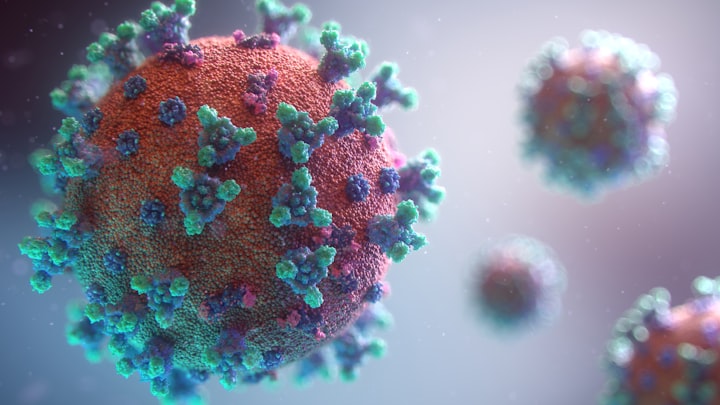Unveiling the Transformative Impact of COVID-19 on Medical Technology
A Paradigm Shift in Healthcare

Introduction:
The COVID-19 pandemic has unleashed an unprecedented global crisis, challenging healthcare systems and exposing the vulnerabilities in our approach to public health. However, amidst the chaos and devastation, there is a silver lining—a catalytic effect on medical technology. From innovative diagnostic tools to telemedicine platforms, COVID-19 has forced healthcare providers and technology developers to rapidly adapt and accelerate the integration of cutting-edge solutions. This article explores the profound impact of COVID-19 on medical technology and how it has revolutionized various aspects of healthcare delivery.
Accelerated Development of Diagnostic Tools:
COVID-19 highlighted the urgent need for accurate and rapid diagnostic tests to identify infected individuals and control the spread of the virus. Traditional laboratory-based methods were supplemented by newer technologies such as polymerase chain reaction (PCR) tests, point-of-care testing (POCT), and antigen tests. The development of rapid and reliable diagnostic tools became a global priority, resulting in the emergence of innovative solutions like CRISPR-based diagnostics and digital platforms that leverage artificial intelligence (AI) for image analysis. These advancements have not only facilitated prompt diagnosis of COVID-19 but also laid the groundwork for more efficient and accessible diagnostic technologies for future healthcare challenges.
Telemedicine and Remote Patient Monitoring:
COVID-19 necessitated the adoption of telemedicine on an unprecedented scale. The limitations imposed by lockdowns, social distancing measures, and overwhelmed healthcare systems led to a surge in remote consultations and virtual care delivery. Telemedicine platforms, supported by video conferencing, remote monitoring devices, and mobile health applications, allowed patients to receive medical advice, monitor vital signs, and manage chronic conditions from the safety of their homes. This paradigm shift in healthcare delivery has not only reduced the burden on hospitals but also improved accessibility, particularly for individuals in remote areas or with limited mobility.
AI and Machine Learning in Healthcare:
The COVID-19 crisis presented an opportunity for AI and machine learning to shine in the field of healthcare. These technologies played a crucial role in various aspects, such as drug discovery, epidemiological forecasting, and patient management. AI algorithms were employed to analyze vast amounts of clinical data, assisting in the identification of potential treatments and predicting disease outcomes. Machine learning models helped in contact tracing and monitoring the spread of the virus. Furthermore, AI-powered chatbots and virtual assistants emerged as valuable tools for providing accurate information, answering queries, and reducing the burden on healthcare personnel.
Robotics and Automation:
In response to the pandemic, healthcare facilities turned to robotics and automation to minimize human contact and enhance safety. Robots were deployed for tasks such as disinfection, medication delivery, and patient monitoring. In some regions, robotic systems were employed to assist in surgeries, reducing the risk of infection and improving precision. Automation solutions also streamlined administrative processes, allowing healthcare workers to focus more on patient care. The integration of robotics and automation not only protected frontline healthcare workers but also enhanced overall efficiency and reduced the risk of nosocomial infections.
Wearable Devices and Remote Monitoring:
The demand for wearable devices and remote monitoring technologies experienced a surge during the pandemic. These devices, ranging from smartwatches to biosensors, enabled continuous monitoring of vital signs, oxygen saturation, and activity levels. Patients with mild COVID-19 symptoms could be remotely monitored, ensuring early detection of complications and timely intervention. Moreover, wearables provided valuable data for population health studies, enabling researchers to identify patterns and risk factors associated with COVID-19. The widespread adoption of these devices has opened doors to proactive healthcare management, empowering individuals to take charge of their well-being and enabling healthcare providers to deliver personalized care.
Conclusion:
The COVID-19 pandemic has acted as a catalyst for innovation and transformation in the field of medical technology. From diagnostic tools to telemedicine platforms, the healthcare industry has witnessed a paradigm shift in how care is delivered. The rapid development and deployment of these technologies during the crisis have not only enabled a more efficient response to the pandemic but also set the stage for a more technologically advanced and patient-centered healthcare system. As we move forward, it is essential to build upon these advancements, ensuring equitable access, addressing privacy concerns, and harnessing the full potential of medical technology for the benefit of all.
About the Creator
walter Rodriguez
I love writing article and providing you guys with knowledge and information about certain things in life that maybe you will come across into.






Comments
There are no comments for this story
Be the first to respond and start the conversation.